G.L. Holt’s map of the Wyoming Territory was created in 1883 and depicts the counties that made up Wyoming at the time. These counties eventually decreased in size and additional counties were established.
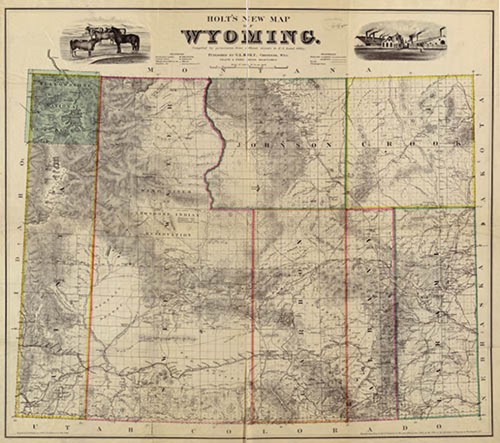

G.L. Holt’s map of the Wyoming Territory was created in 1883 and depicts the counties that made up Wyoming at the time. These counties eventually decreased in size and additional counties were established.
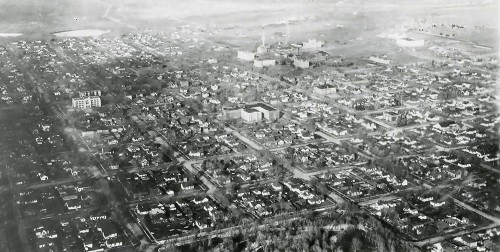
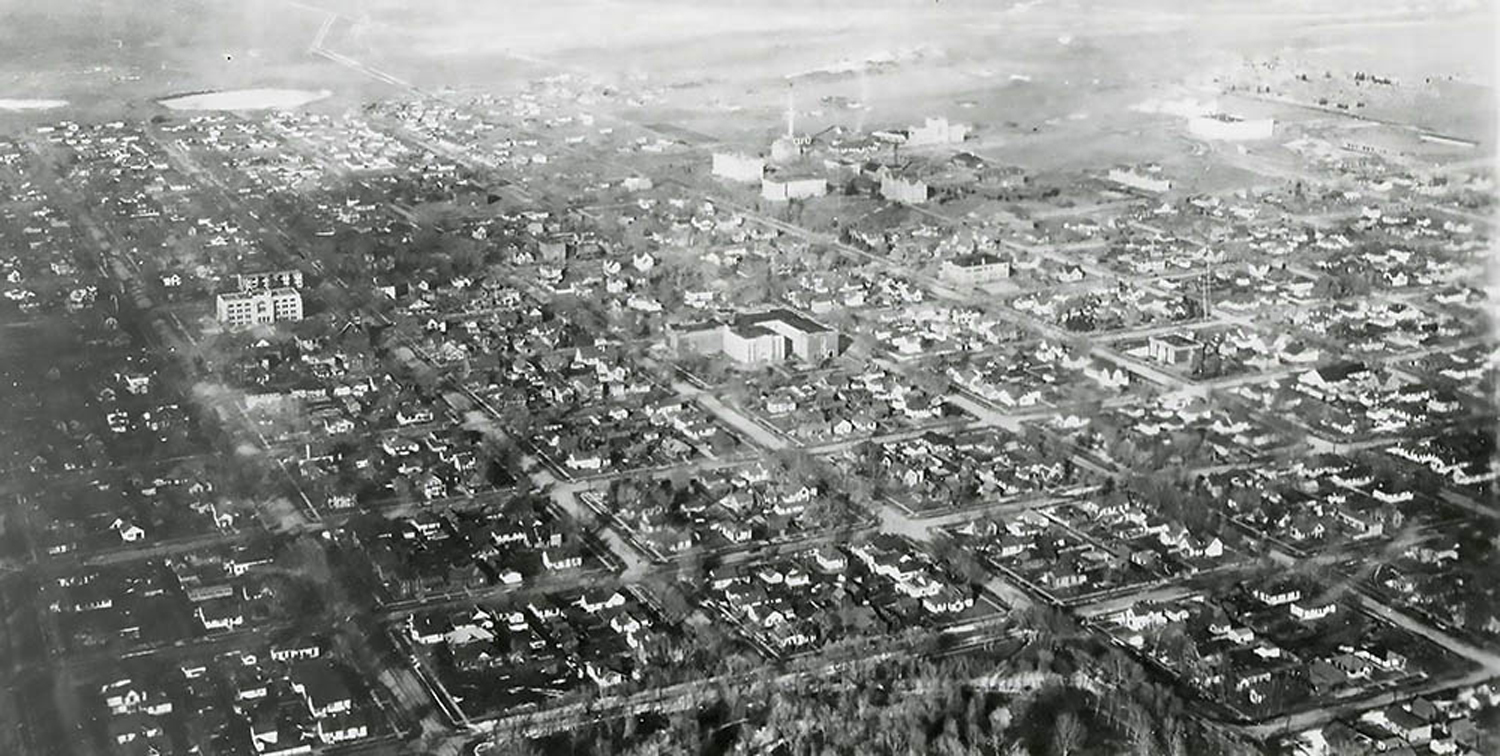 By 1932, Laramie had grown to a well-established city. With the presence of the Union Pacific Railroad and the University of Wyoming, the city flourished and expanded beyond its early borders.
By 1932, Laramie had grown to a well-established city. With the presence of the Union Pacific Railroad and the University of Wyoming, the city flourished and expanded beyond its early borders.
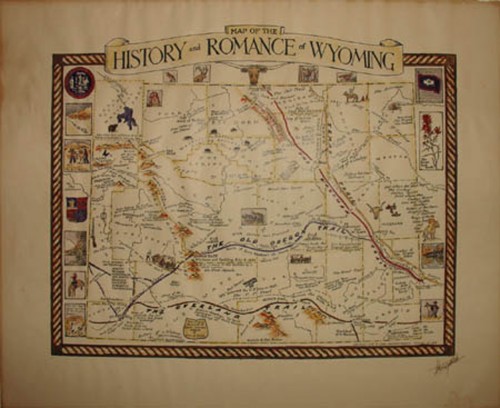
This is a hand-colored map by Wyoming historian Grace Raymond Hebard depicting historical events in Wyoming, including narratives. Created shortly before her death in 1936, the map is autographed in the lower right corner.
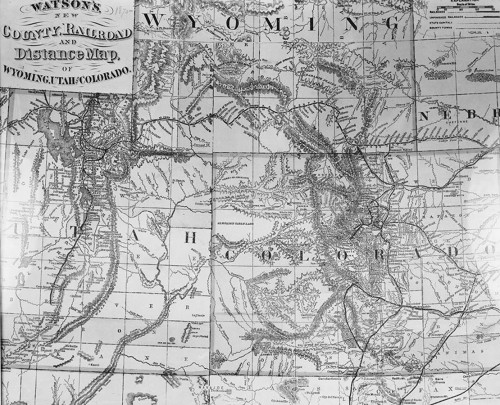
This map depicts the railroad’s progression through Wyoming and its neighboring states.
Learn more about the history of the building of the Transcontinental Railroad through Wyoming.
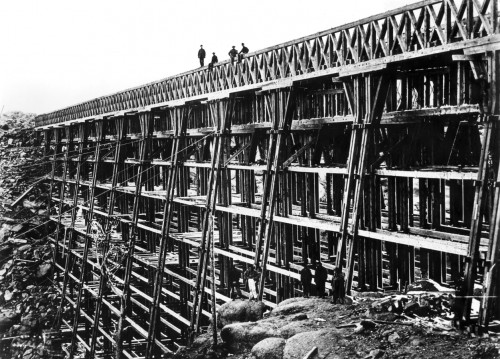
The Dale Creek Bridge, located some twenty miles southeast of Laramie and four miles west of the Ames Monument, was the longest bridge on the Union Pacific transcontinental railroad. Completed in 1868 in southeastern Wyoming Territory, the Dale Creek Bridge presented engineers of the transcontinental railroad with one of their most difficult challenges, requiring them to cut through nearly a mile of granite.
In addition, the trestle was originally built of wood, which swayed in the wind as the first train crossed the bridge on April 23, 1868. Carpenters rushed to shore up the bridge. In the mad dash, two fell to their deaths. Until the timber was replaced, the bridge flexed under the strain of passing trains.
In 1876, the wooden bridge was replaced by an iron version constructed upon the same 1868 piers. In 1901, the distinctively tall Dale Creek Bridge was replaced, abandoned and later dismantled by the Union Pacific after the line was rerouted.
Learn more about the Dale Creek Bridge and the Union Pacific Railroad.
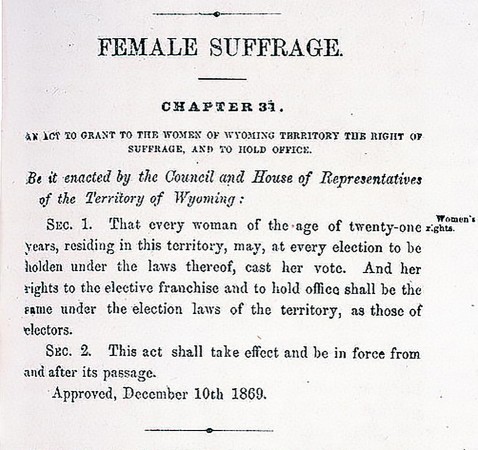
Wyoming was the first territory (and eventual state) in the Union to grant women the right to vote in 1869. William Bright, who held a seat in the 20-member territorial legislature, sponsored a bill that all citizens should have suffrage — or equal rights — including the right to vote.
The story of why Bright actually sponsored the bill is far more in-depth than this, of course. While there was no organized suffrage movement in Wyoming – no rallies or parades — a group of women marched outside of territorial Governor John Campbell’s office until he signed the bill into law.
Wyoming is known as the “Equality State” and boasts a number of “firsts” for women along with the right to vote. Esther Hobart Morris was the nation’s first woman justice of the peace; the first jury to include women was seated in Laramie in 1870; and Nellie Tayloe Ross was the first woman governor, elected to complete her husband William’s term when he died in office in 1924. She also went on to become the first female director of the United States Mint appointed by Franklin D. Roosevelt in 1933.
Learn more about the Western suffrage movement and many other Wyoming “firsts.”
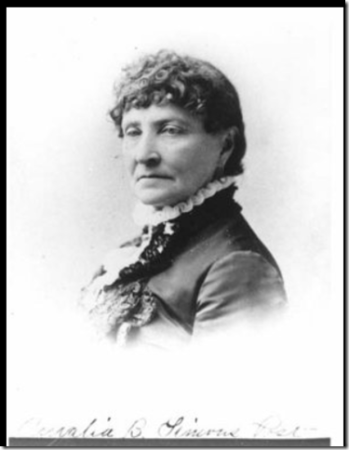
Amalia Post was the first woman to serve as a jury foreman on the world’s first jury to include women, which convened in March of 1870. The women on the grand jury and trial jury were selected less than six months after Wyoming’s first territorial legislature granted women the right to vote.
Post was originally the kind of woman who believed that a “woman’s place was in the home.” It took a few of life’s hard knocks to reveal to her the strengths she possessed. A philandering husband left Post alone and destitute in Denver, yet she discovered she had a real knack for negotiating and became quite adept at taking care of herself financially. She raised chickens and loaned out her proceeds to men, collecting interest on the loans.
In October 1864, she married one of her business partners, Morton E. Post. This marriage would lead her to a new life in Wyoming Territory, where women were granted the right to vote in 1869. She became not only one of the first women to ever serve on a jury, but also the first woman foreman of a jury. Post would later become a leader in the national women’s suffrage movement.
In 1871, the Wyoming Territorial Legislature tried to repeal a woman’s right to vote. Amalia Post is said to have personally lobbied Governor John A. Campbell to veto the bill, which he did.
Wyoming has long enjoyed a series of “firsts.” In February 1870, Esther Hobart Morris of South Pass City was appointed as the nation’s first female justice of the peace. In 1924, Nellie Tayloe Ross was elected as the first woman governor to complete the term of her husband who died in office.
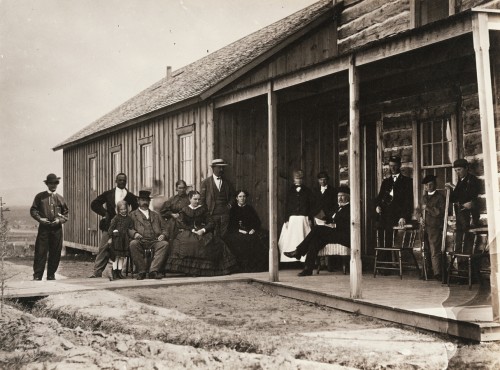
Pictured above are passengers waiting for a train at an early train station in Wyoming.
The railroad did something for many a small town along its tracks that nothing else could — it made the town matter.
A depot became the hub of that town just as it did in Laramie where hundreds of passengers passed through daily. As well, a standard railroad station received freight, express shipments, as well as combining other functions such as being the local telegraph office. The train station was the heart of Laramie and a platform for business, travel and communication.
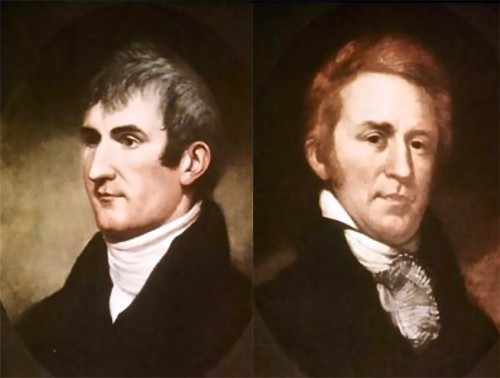
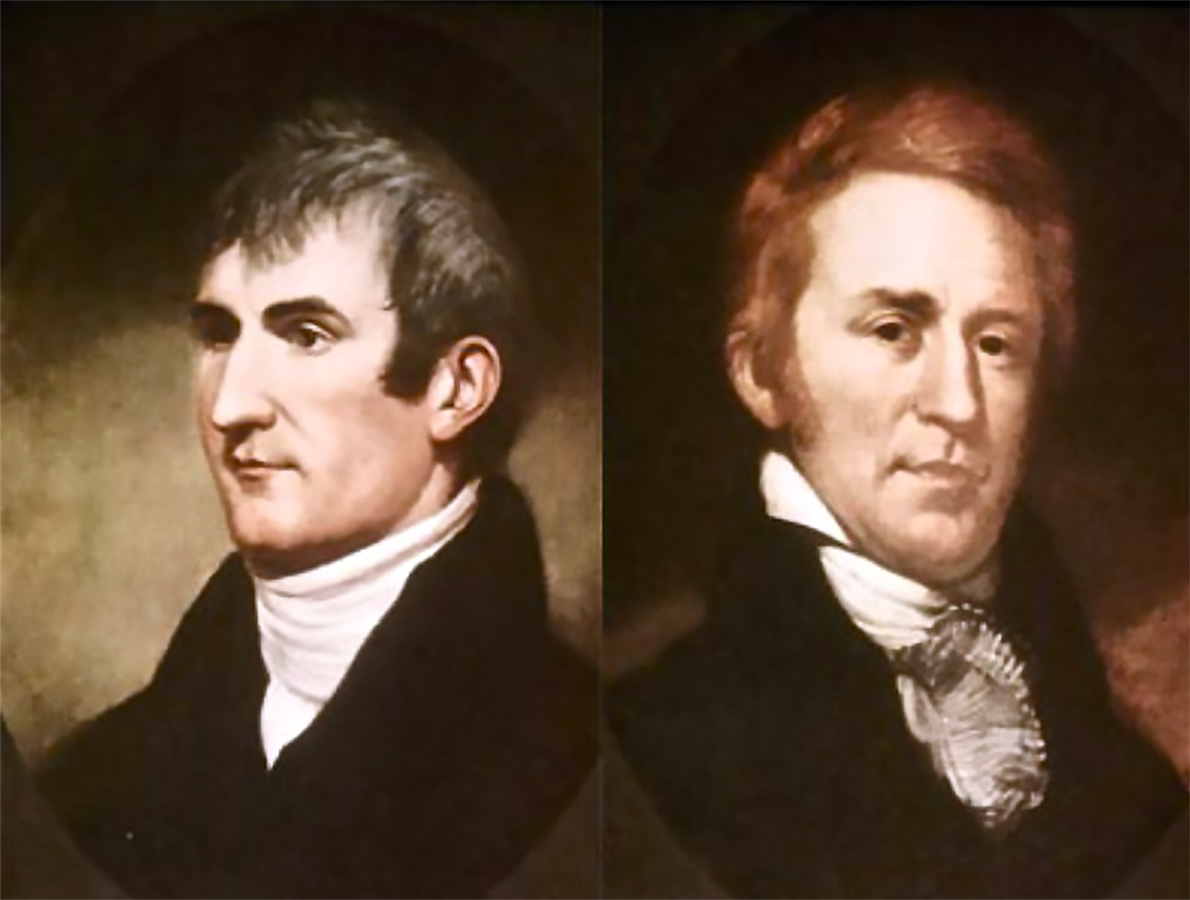
Meriwether Lewis and William Clark were American explorers who led the Lewis and Clark Expedition through the uncharted American interior to the Pacific Northwest in 1804–06. Known as the “Corps of Discovery,” the Lewis and Clark Expedition spanned 8,000 miles and three years, travelling down the Ohio River, up the Missouri River, across the Continental Divide, and ultimately to the Pacific Ocean.
Lewis served as the field scientist, chronicling botanical, zoological, meteorological, geographic and ethnographic information. Upon their return to Washington DC, Lewis was given his salary and 1,600 acres of land. He was later named governor of the Upper Louisiana Territory.
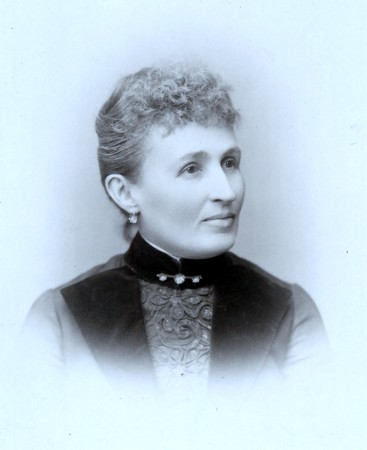
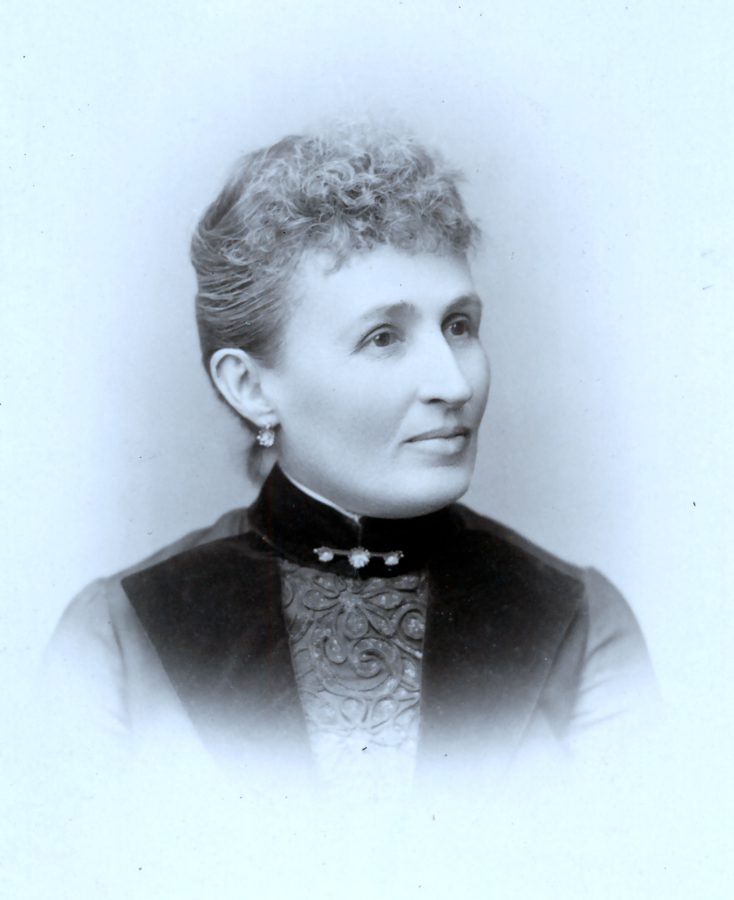
Agnes Chase Baker of Laramie was among a select group of women called upon to serve on the world’s first jury to include women, which convened in March of 1870. However, she was dismissed upon her request.
The women on the grand jury and trial jury were selected less than six months after Wyoming’s first territorial legislature granted women equal political rights. Eliza Stewart Boyd’s name was the first female’s to be drawn from the voter’s roll to serve on the Laramie grand jury. The other five women included Mrs. Amelia Hatcher, Mrs. G.F. Hilton, Mrs. Mary Mackell and Mrs. Sarah W. Pease.
Wyoming has long enjoyed a series of “firsts.” In February 1870, Esther Hobart Morris of South Pass City was appointed as the nation’s first female justice of the peace. In 1924, Nellie Tayloe Ross was elected as the first woman governor to complete the term of her husband who died in office.